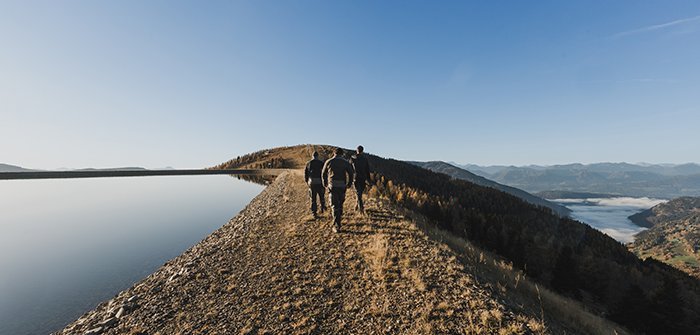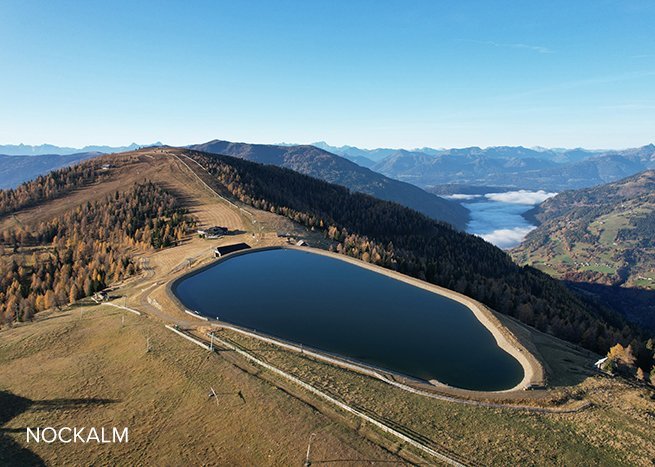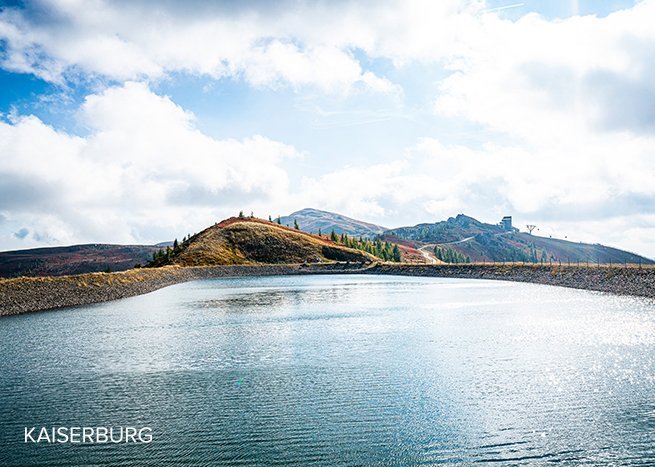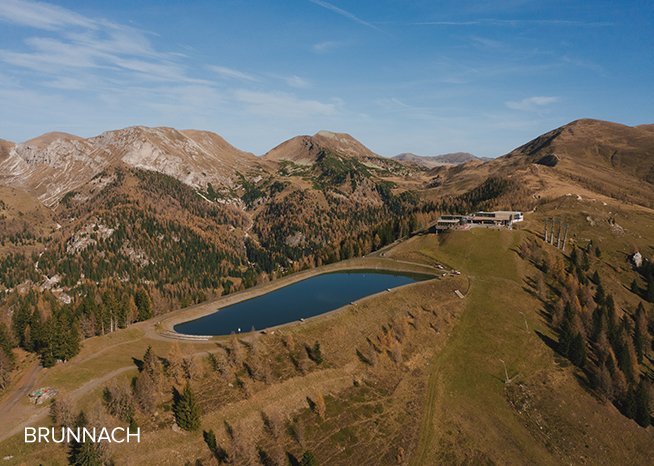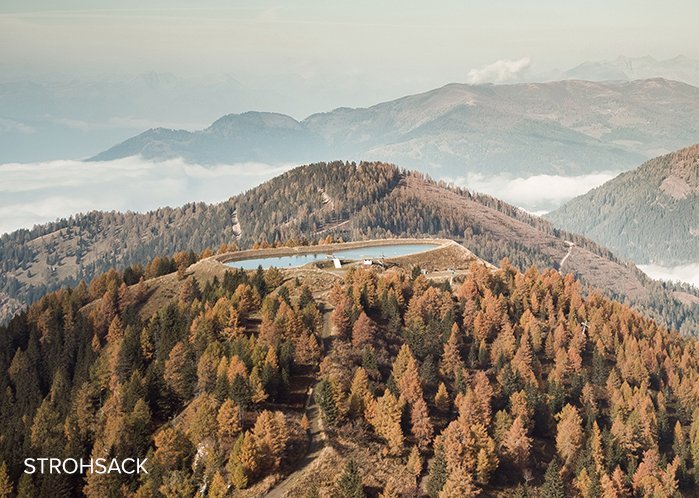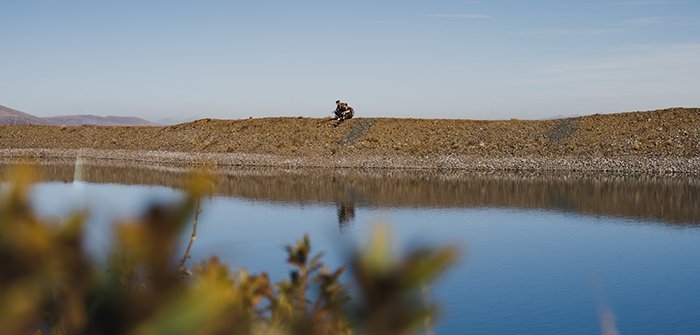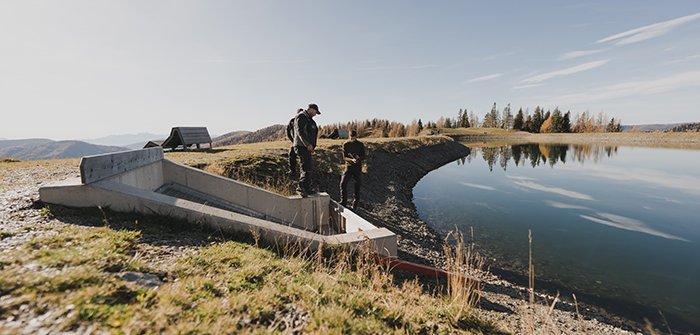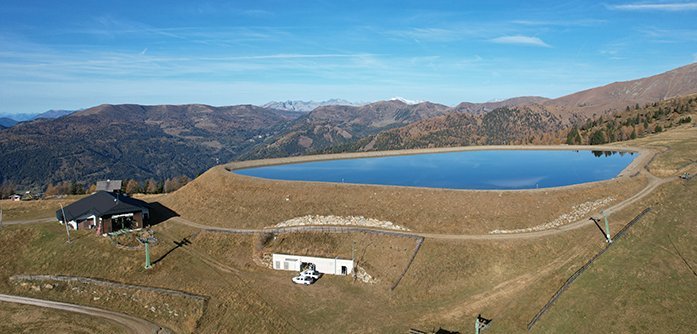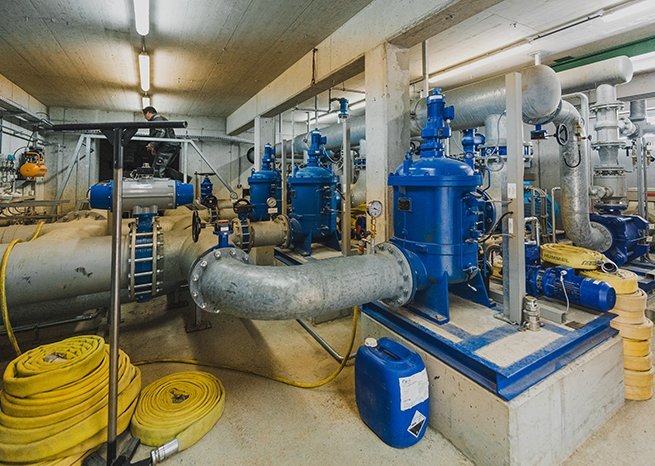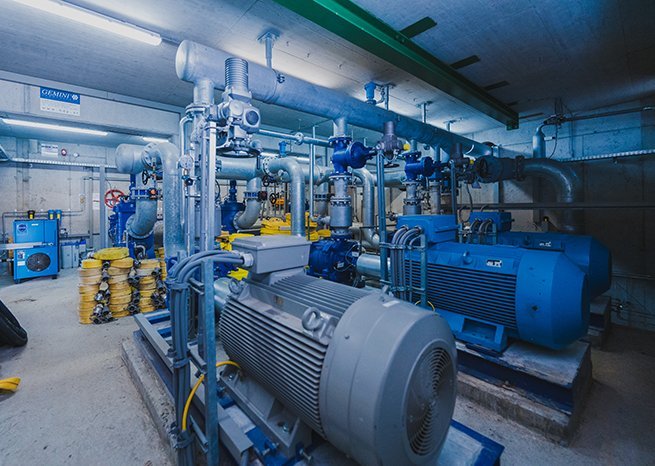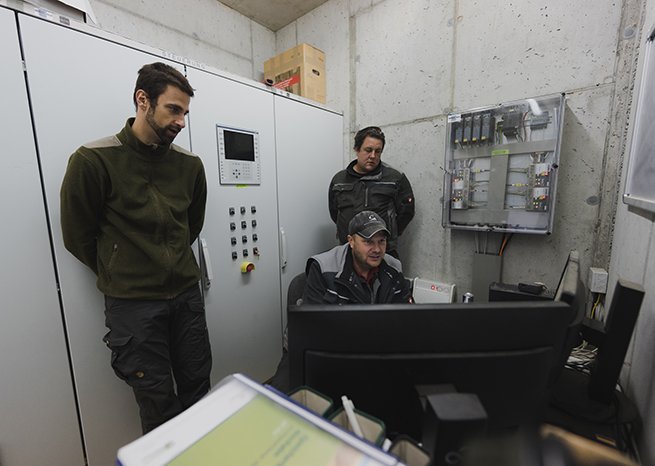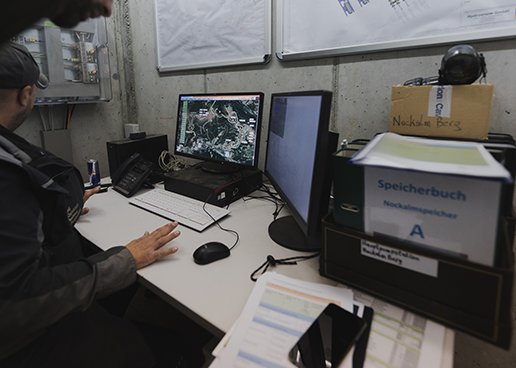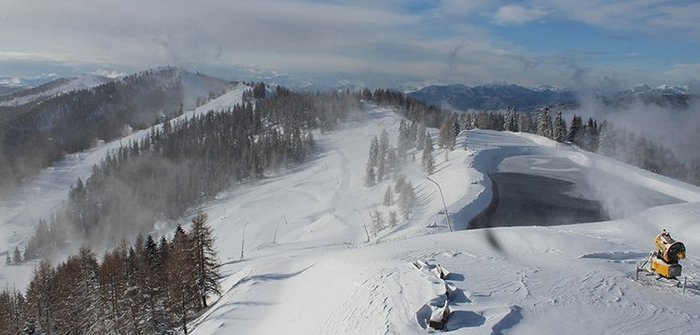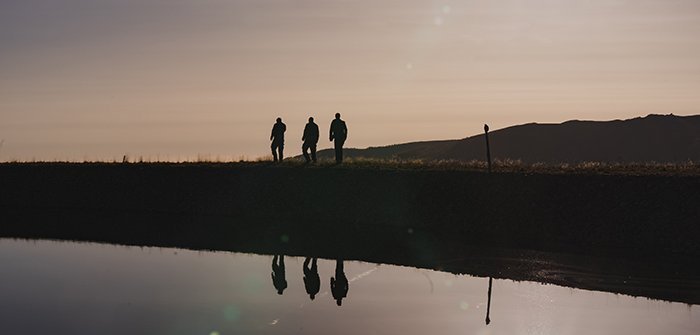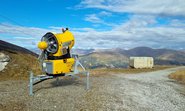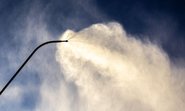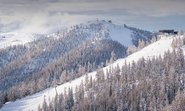Perfectly groomed slopes, magnificent snow and heavenly descents from the beginning to the end of the winter season – a dream for all winter sports enthusiasts, right? In order to ensure a consistently high quality of the pistes, we, like many other ski resorts, make use of technical snowmaking measures. In addition to snow guns, pipes, pumping stations, electricity and compressed air, what we need most of all for producing technical snow is water. And the snow reservoir facilities that go with it. But where does this water come from? What else can the reservoirs do? And what role does nature conservation play in all this? We show you what the reservoir basins in the skiing area Bad Kleinkirchheim are all about.
First things first: Colloquially, we often speak of a 'reservoir lake' or 'reservoir pond'. However, the water reservoirs needed for technical snowmaking are special basins created specifically for this purpose. This is why, in order to be correct, we speak of 'reservoir basins'.
The reservoir basins in Bad Kleinkirchheim’s skiing area.
Reservoir basins are the heart of our snowmaking systems. The first reservoir in Bad Kleinkirchheim was built in 1991 – the Nockalm reservoir. Today, more than 30 years and two expansion periods later, this is the largest storage basin in the skiing area. In total, we have four reservoir basins with a total capacity of 339,000 m³:
| Reservoirs | Storage capacity |
| Nockalm reservoir | 182,000 m³ |
| Kaiserburg reservoir | 67,000 m³ |
| Brunnach reservoir | 52,000 m³ |
| Strohsack reservoir | 38,000 m³ |
| TOTAL | 339,000 m³ |
Local recreation by the mountain water.
The reservoirs are open for you to spend some time in the summer. As a popular vantage point and with seating all around, it's a wonderful place to sit and relax.
Throughout Austria, water in the reservoirs must have at least the same quality as bathing water. And, according to the applicable regulations, no additives may be used for snow production either. This is how we can ensure that the balance of nature is not adversely affected.
However, swimming is not permitted there. This is because it's an operational facility and the construction of reservoirs also creates valuable habitats for rare or protected animal species. So, keep an eye out on your next hike. With a bit of luck, the common toads, grass frogs or Alpine newts will have woken up from their hibernation by then.
Reservoir basin searches for location.
Of course, we can't just build a reservoir basin at any location. Aside from a strategically favourable position for the snowmaking facilities, preserving the landscape and the surrounding geological and geotechnical conditions play a major role when it comes to choosing a location. There's no question that building a reservoir still means an intervention into nature to a considerable degree. In order to understand the conditions and circumstances on site as well as possible, we work in close cooperation with experts from the fields of ecology (nature conservation and forestry), geology, geotechnics, hydraulic engineering, etc., as well as with the responsible authorities. So from planning to implementation, precision is required. After all, we don't want to expose our ecosystem to any additional risk.
But how is a reservoir basin created?
In order to create space for the necessary depth of a reservoir basin in the first place, the earth at the specified location must first be cleared. This is done in the sense of mass balancing. This means that terrain is excavated, but at the same time embankments are raised.
As soon as the basin is uncovered, it's time to seal the interior surface. A plastic seal is usually used here, which is covered with gravel. Because in this way, the seal is also protected from various environmental influences, such as ice floes or UV radiation. Asphalt concrete seals are often used as an alternative, especially for larger systems.
To prevent the reservoir water from overflowing uncontrollably, each basin is also equipped with a so-called flood relief structure and a bottom outlet. In the event of excessive precipitation or unexpected malfunctions, these act as a safety valve for the reservoirs.
Speaking of safety.
Of course, all reservoir systems are monitored around the clock – by means of partially or fully automated measuring and monitoring programmes, but also through the eyes of various responsible persons. And this is how it works:
- Our internal dam attendants carry out 14-day visual and mechanical checks on the systems.
- Once per year, the systems are inspected by external experts, the so-called dam managers. In our case, eb&p Umweltbüro GmbH carries out this task.
- At intervals of several years our systems must also be subjected to a general inspection, carried out by authorities from the State of Carinthia. This is followed by a summary assessment with regard to the system components, safety and any potential dam movements..
Did you know that our reservoirs are subject to the same controls by the province of Carinthia that apply, for example, to the Kölnbrein dam in the Maltatal valley in Carinthia? This is Austria's highest dam and, with a storage volume of 200 billion litres, it's also the country's largest reservoir.
And where does the water come from?
And where does the water come from? We take the amount of water we need for snowmaking in the Bad Kleinkirchheim skiing area from the surrounding streams or from the groundwater near the Kaiserburg cable car. In order to feed it into the reservoirs and use it accordingly, we obviously require a water law permit from the authorities. Incidentally, this also applies to all other systems that we operate in relation to technical snowmaking.
The optimum water temperature for snowmaking is about 1-2 °C. To cool the water, air bubbles are blown in through hoses at the bottom of the reservoirs. At the same time, the water is continuously circulated. This is important because otherwise the water on the surface would freeze very quickly.
As a side note: before the extracted groundwater finds its way into the snowmaking system, we use it to generate heat in the Thermal Römerbad.
From the reservoir to the slopes and back again.
We can usually start snowmaking on the slopes from mid-November. With the help of an outlet point, which is located at the deepest point of the basin, we drain the required water from the reservoir. It's then sent to the snow guns in the skiing area. Depending on the altitude, this is done either by means of inherent pressure or by switching on pumps. You can read about how the water is then converted in the snow guns in our blog article 'Water, low temperatures, air'. When winter ends, a large portion of the meltwater also flows back into the streams, thus bringing the snowmaking cycle back to its starting point.
Rather complex, don't you think? No wonder it sometimes takes up to 10 years from the first planning step to the ground-breaking ceremony to the final commissioning of a reservoir basin! But the effort as well as the numerous official approval procedures are worth it. Because only in this way can we work with our valuable resource, water, in a sustainable way as well as provide you with a perfect experience on the slopes with a clear conscience.
Would you like to learn more about technical snowmaking? Then take a look at our blog article “Ready, Set, Go!”.

